The French Alps form a magnificent mountain range that stretches across eastern France, creating a natural border with Switzerland and Italy. These towering peaks don’t just offer world-class skiing and dramatic landscapes—they also cradle some of Europe’s most enchanting villages.
Nestled in deep valleys or perched on sunny plateaus, these alpine communities have preserved centuries of mountain traditions while adapting to modern visitors seeking both adventure and authenticity. The stone-and-timber architecture, flower-bedecked balconies, and church spires rising against snowy backdrops create scenes that seem lifted straight from storybooks.
Here is a list of 15 beautiful villages in the French Alps that showcase the region’s remarkable blend of natural splendor and cultural heritage.
Annecy
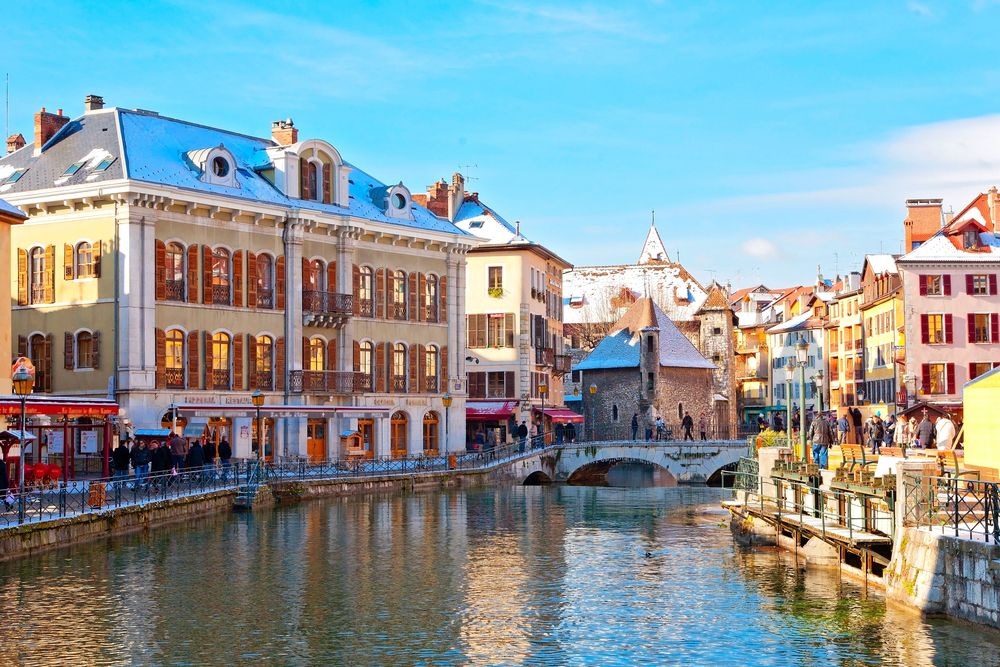
Often called the “Venice of the Alps,” Annecy wraps around the northern tip of its crystal-clear lake with a network of canals threading through its medieval center. The pastel-colored buildings lean over the water channels, creating perfect reflections that have inspired painters for centuries.
Dominated by its restored 12th-century château, the old town reveals new treasures around every corner—from the Palais de l’Isle (a former prison shaped like a stone ship) to quaint bridges adorned with blooming flowers in summer. The surrounding mountains frame the scene, their reflections dancing on the lake’s surface as swans glide past restaurants with lakeside terraces.
Chamonix-Mont-Blanc
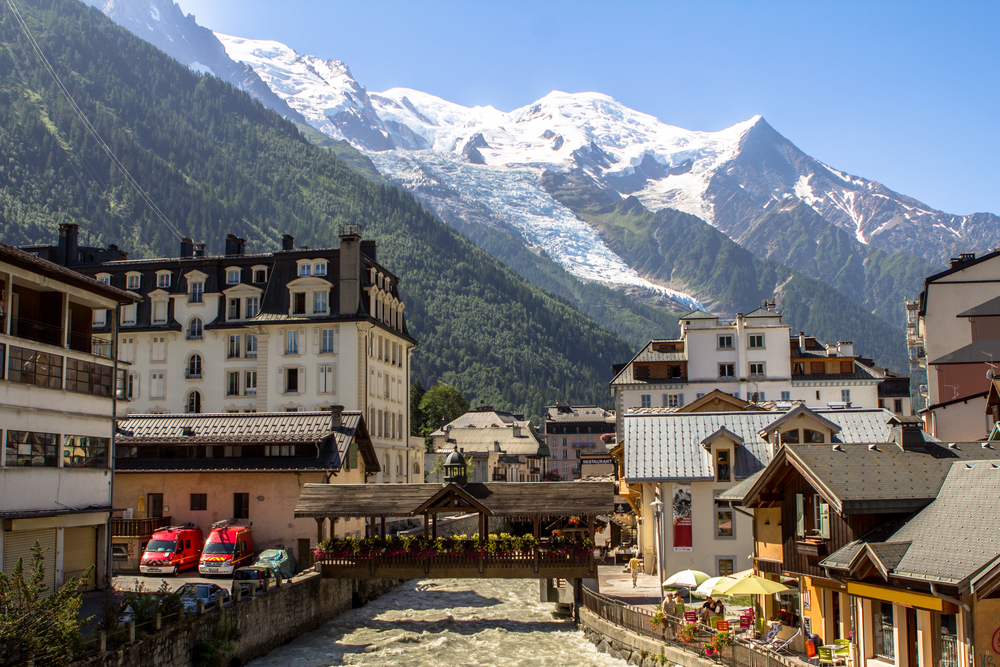
Nestled beneath western Europe’s highest peak, Chamonix blends alpine tradition with cosmopolitan energy in a setting of unparalleled mountain grandeur. The village center retains its historic character with Belle Époque hotels and traditional Savoyard buildings, while the mighty presence of Mont Blanc looms overhead, its glaciers visible from main street cafés.
Adventure seekers from around the world have transformed this once-remote farming community into a global mountain sports hub without sacrificing its authentic mountain soul. The Aiguille du Midi cable car whisks visitors to 12,600 feet for panoramic views spanning France, Switzerland, and Italy—a breathtaking experience even for those who never clip into skis.
Like Travel Pug’s content? Follow us on MSN.
Megève
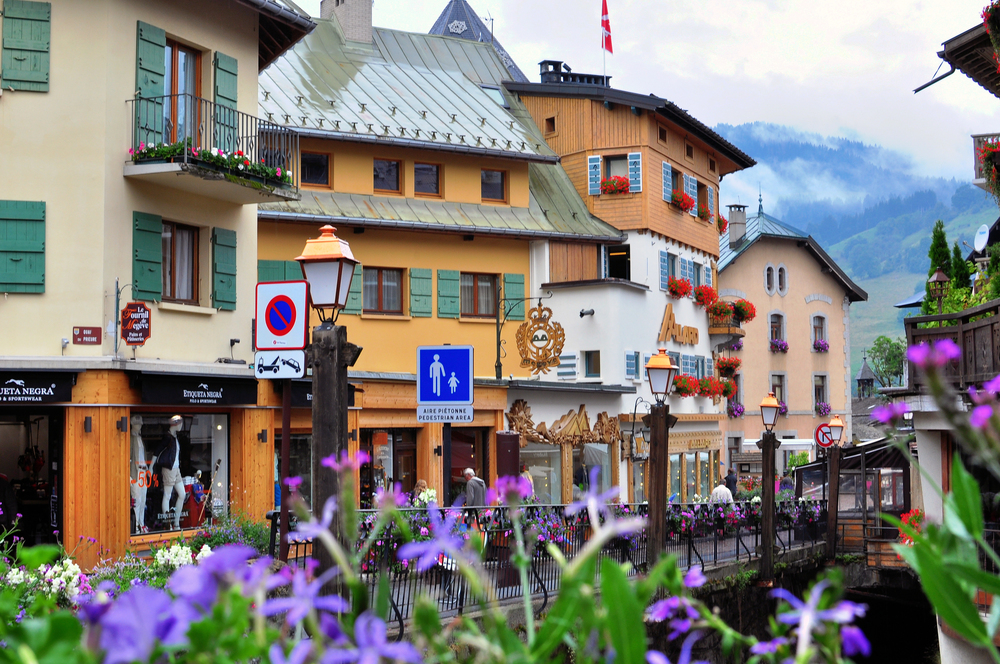
Created as France’s answer to Switzerland’s St. Moritz in the 1920s, Megève maintains an air of discreet luxury while preserving its medieval village heart. Horse-drawn carriages clip-clop across the central square, where a 13th-century church tower rises above cobblestones worn smooth by centuries of mountain life.
Despite its upscale reputation, Megève remains authentically Savoyard, with working farms surrounding the village and traditional cheesemaking still practiced in nearby chalets. The car-free village center comes alive during winter evenings when twinkling lights reflect off snow-covered rooftops and visitors warm themselves with mulled wine after days spent on perfectly groomed slopes.
Morzine

Straddling the border between traditional Alpine architecture and modern mountain resorts, Morzine manages to feel both timeless and contemporary. Slate-roofed chalets with carved wooden balconies line streets where working farms once stood, while church bells still mark the hours as they have for centuries. The Dranse River rushes through the village center, crossed by footbridges that connect the two sides of this lively community.
Unlike purpose-built ski stations, Morzine evolved organically from farming roots, giving it an authentic character that persists despite its popularity with British and Dutch visitors. Summer brings mountain bikers and hikers to trails that skiers wouldn’t recognize beneath the snow in winter.
Bonneval-sur-Arc
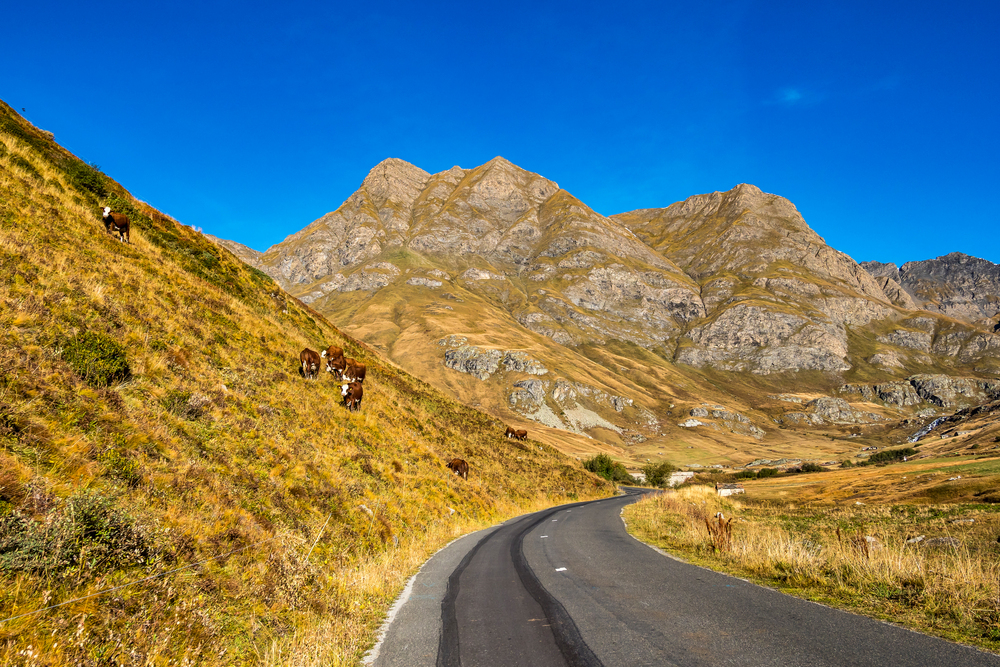
Clinging to existence at the end of the isolated Haute-Maurienne valley, Bonneval represents alpine architecture in its purest form. Massive stone buildings with tiny windows and wooden balconies huddle together against winter’s harsh realities, while slate roofs weighted with stones withstand mountain winds.
The village has remained largely unchanged since the 19th century, with narrow passages between houses designed to minimize snow clearing during winters when the village was completely cut off from the outside world. Despite modern road access, Bonneval retains its end-of-the-earth feeling, especially when snow transforms the landscape into a monochromatic dream broken only by woodsmoke rising from stone chimneys.
Like Travel Pug’s content? Follow us on MSN.
Courchevel
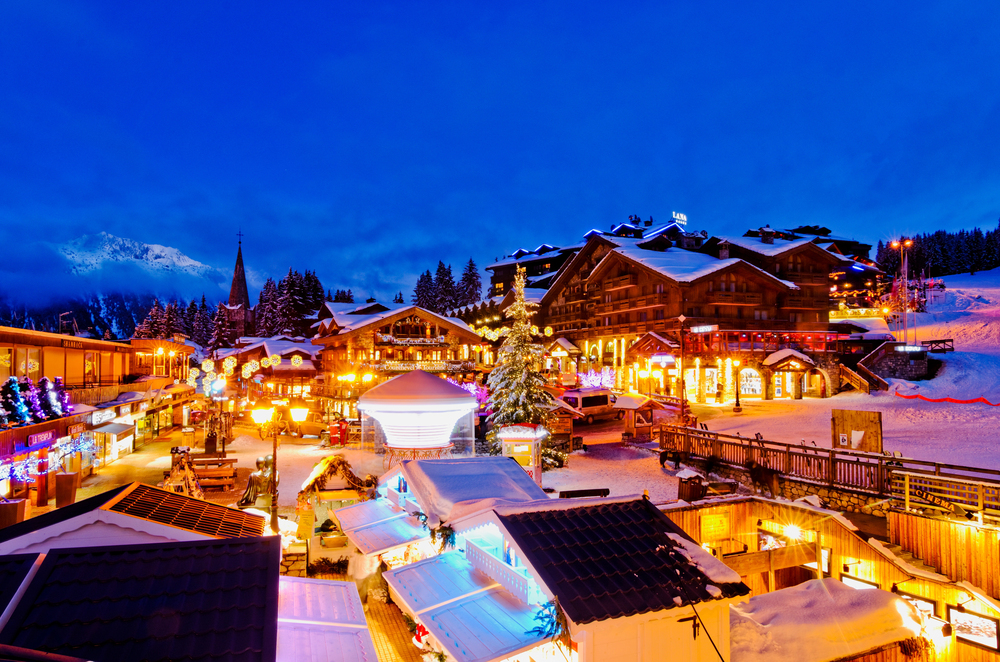
What began as a bold experiment in purpose-built ski resort design has evolved into a collection of linked villages offering experiences ranging from authentic Savoyard charm to unabashed luxury. While Courchevel 1850 (named for its altitude in meters) attracts celebrities with Michelin-starred restaurants and designer boutiques, the lower villages like Courchevel Le Praz maintain traditional alpine architecture and a more relaxed atmosphere.
Regardless of which level you choose, the surrounding mountain scenery remains spectacular, with pine forests and pristine slopes stretching across the world’s largest connected ski area. Summer transforms the area into a verdant playground where wildflowers replace snow and the slopes become hiking trails.
Samoëns
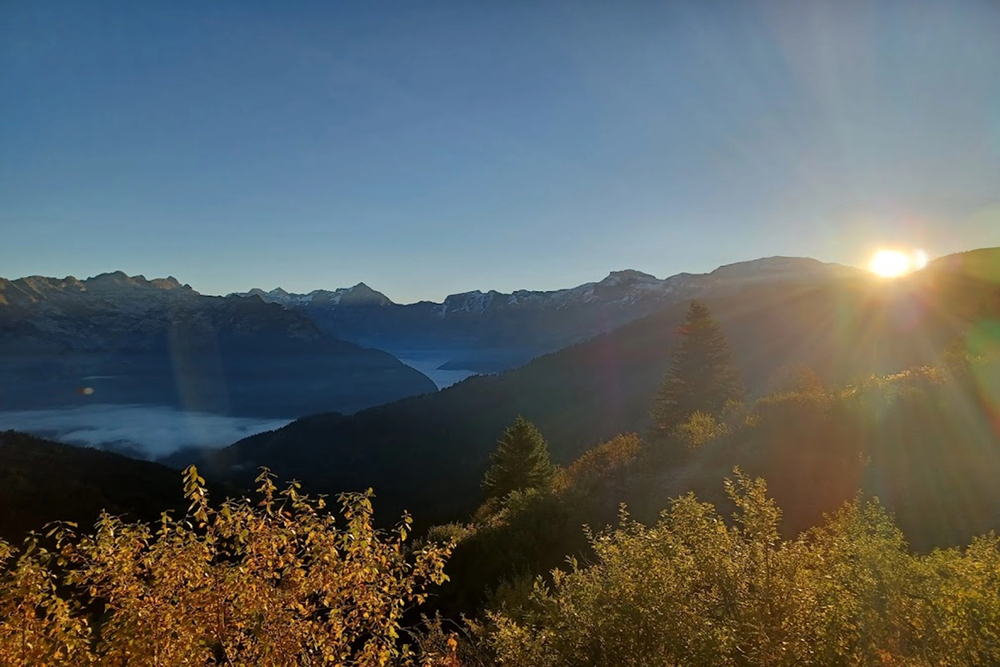
Unlike many alpine villages that grew around defensive positions on hillsides, Samoëns spreads across a sunny plateau in the Giffre Valley, giving it a spacious, welcoming character. The village takes pride in its stonecutting heritage, with masterful masonry visible in buildings surrounding the central Linden tree planted in 1438. The medieval core remains remarkably intact, with covered passageways and water fountains dating back centuries.
During summer months, the famous botanical garden showcases alpine flora against mountain backdrops, while winter brings skiers accessing the Grand Massif domain through a gondola that leaves directly from the village. Throughout the year, church bells mark time as locals tend to traditions that tourism hasn’t displaced.
Saint-Véran
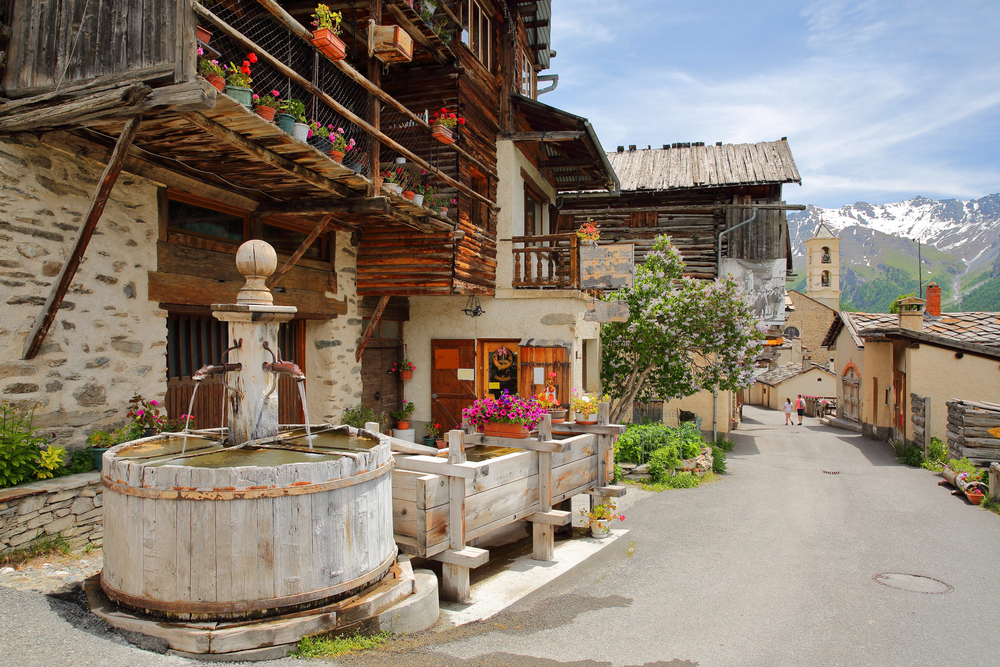
Claiming the title of highest commune in Europe, Saint-Véran clings to a south-facing slope at 6,726 feet, where the thin mountain air carries the scent of larch forests. The village’s position provided maximum sunshine in an environment where winter traditionally lasted seven months, allowing residents to survive in what seems an impossibly harsh location.
The distinctive architecture features wooden galleries called “fusteries,” where, historically, grain and hay would dry in the mountain sun. Water troughs carved from massive tree trunks line the village streets, once vital for livestock and fire protection, but now overflow with colorful flowers during the brief alpine summer.
Like Travel Pug’s content? Follow us on MSN.
Valloire
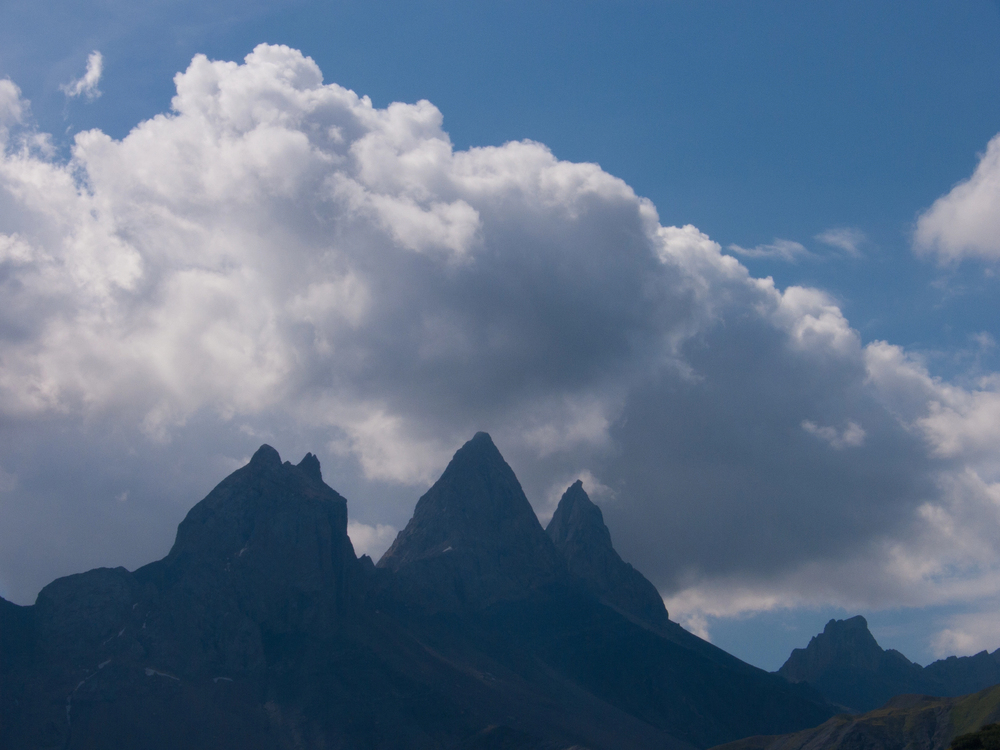
Positioned at the convergence of four valleys beneath the imposing Galibier Pass, Valloire combines deep-rooted mountain traditions with modern resort amenities. The 17th-century baroque church dominates the village center with an ornate interior that seems surprisingly grand for a remote mountain community.
Beyond the central square, traditional chalets with wooden balconies and carved details reveal the village’s agricultural heritage, while newer development has largely maintained architectural harmony with these historic structures. The village hosts a renowned snow and ice sculpture festival each January, transforming the central plaza into an open-air gallery of ephemeral art that gleams under winter sunlight until spring thaws erase the creations.
Sixt-Fer-à-Cheval
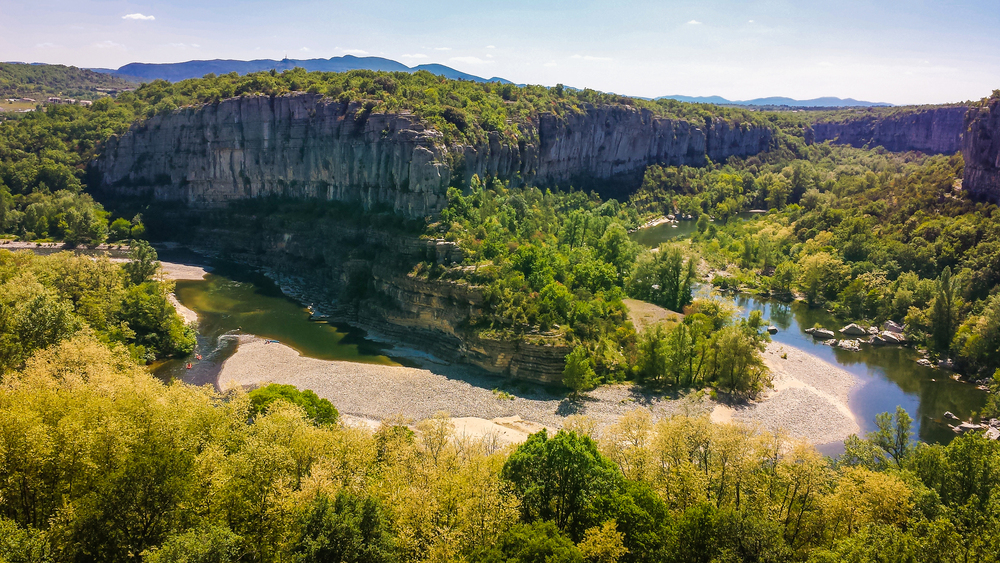
Named for its horseshoe-shaped valley end, where dozens of waterfalls cascade from towering limestone cliffs, this village combines spectacular natural features with well-preserved mountain architecture. Classified among “France’s Most Beautiful Villages,” Sixt centers around a 13th-century abbey whose monks first settled this remote valley.
Stone-built houses with wooden balconies line narrow streets that seem unchanged since medieval times, while farmers continue haymaking on steep slopes using techniques passed down through generations. The surrounding nature reserve protects alpine ibex and chamois that sometimes venture near the village during harsh winters, creating unexpected encounters between residents and wildlife that have shared this valley for centuries.
Val d’Isère
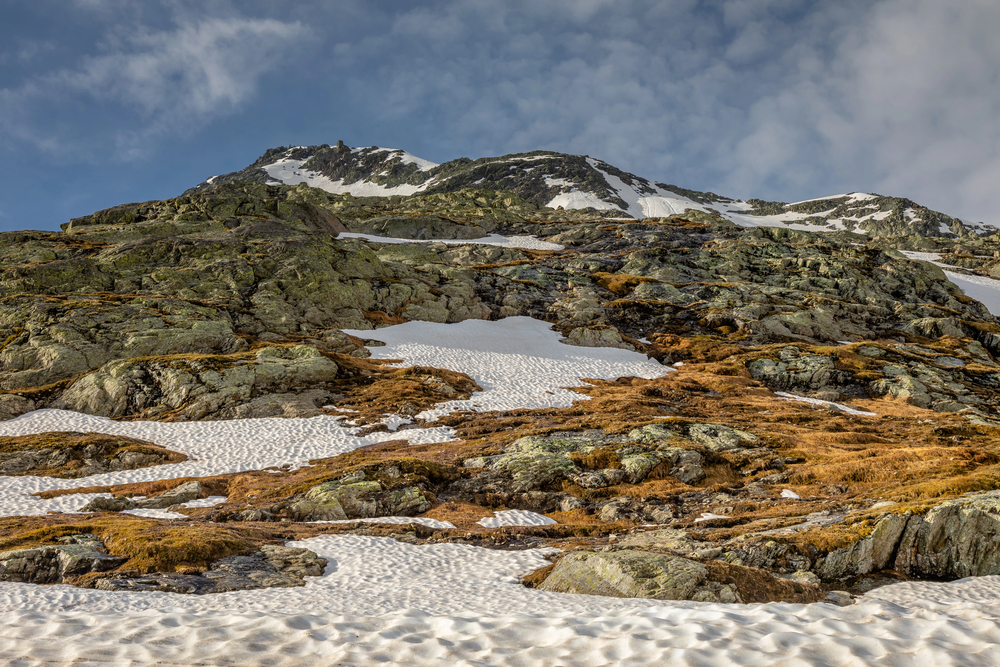
Despite world-class ski infrastructure and international recognition, Val d’Isère has maintained its mountain soul through careful preservation of its historic center. The 17th-century church, with its distinctive separate bell tower, anchors the old village, where stone buildings with carved wooden doors hint at the community’s existence long before winter sports brought global attention.
Modern development has largely respected traditional forms while incorporating contemporary comforts, creating an architectural harmony not always achieved in Alpine resorts. Beyond winter sports fame, the village celebrates its agricultural roots during summer festivals when cows return from mountain pastures decorated with flowers and traditional bells.
Like Travel Pug’s content? Follow us on MSN.
La Grave
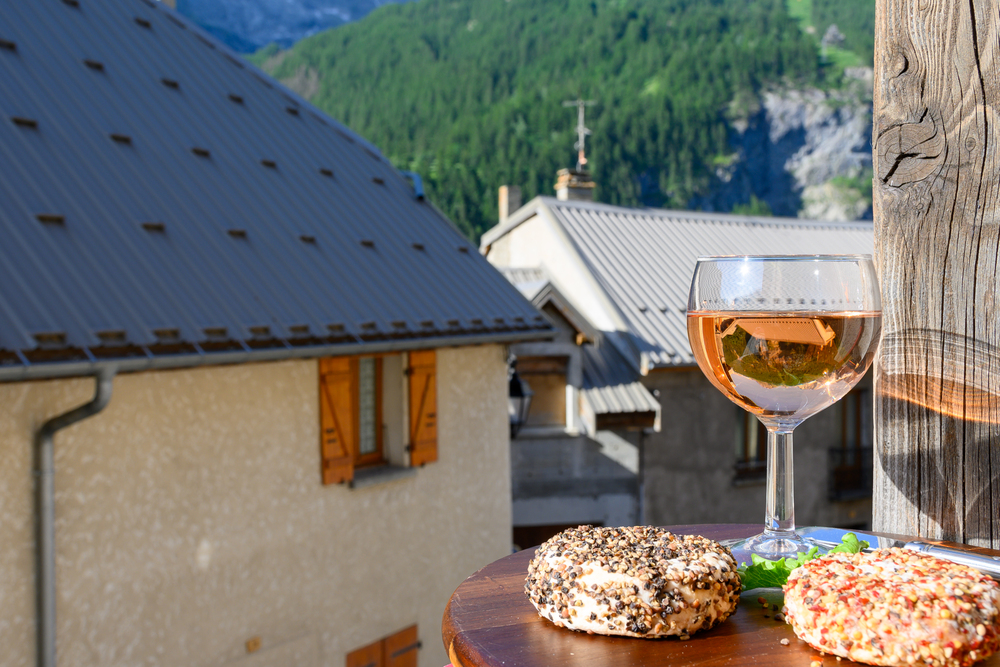
Few Alpine villages maintain such an untamed relationship with their mountain environment as La Grave, where a single cable car accesses vast ungroomed slopes beneath La Meije’s imposing north face. The village itself matches this wild character with sturdy stone buildings that have weathered centuries of harsh alpine conditions without concession to tourist expectations.
Located on a south-facing slope above the Romanche valley, La Grave’s position allows incredible views of mountains that seem close enough to touch. Unlike sanitized resort villages, La Grave embraces its working character with farmers and mountaineers coexisting in a community where nature’s power remains the dominant force shaping daily life.
Yvoire
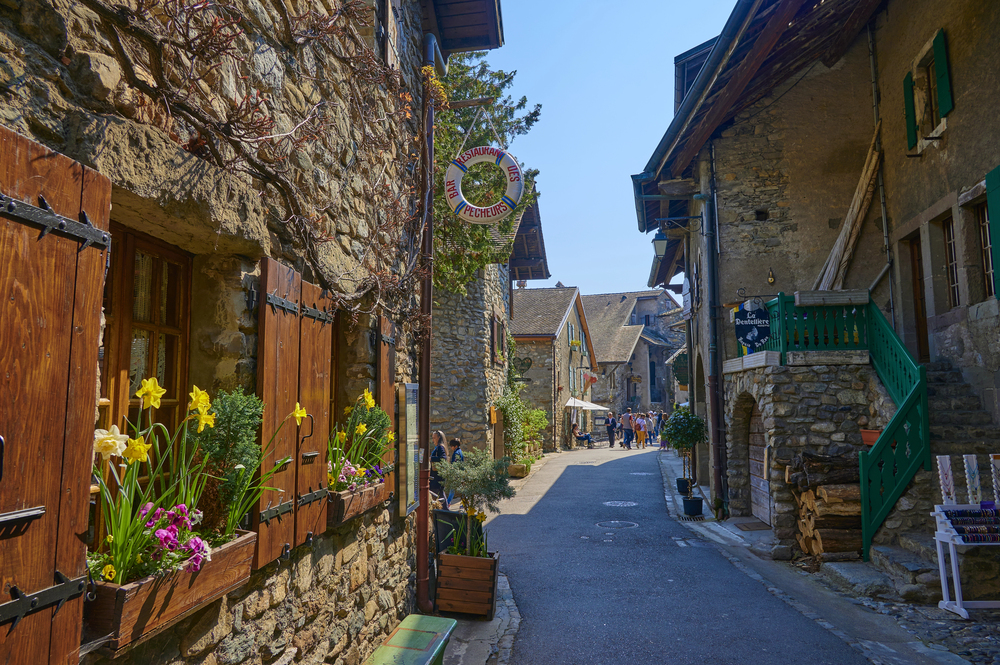
Jutting into Lake Geneva on a small peninsula, Yvoire combines alpine and lakeside characteristics in a perfectly preserved medieval package. Stone walls surround the village core, where narrow streets lead to unexpected gardens and lake vistas between buildings dating from the 14th century. While technically at the Alps’ lower reaches, Yvoire’s position offers spectacular views of snow-capped peaks reflected in Switzerland’s largest lake.
The village has embraced its botanical side with the remarkable Garden of Five Senses, where visitors experience plants through touch, smell, sound, and taste rather than sight alone. During summer months, the lake moderates temperatures, creating a microclimate that allows Mediterranean plants to thrive despite the alpine proximity.
Saint-Martin-de-Belleville
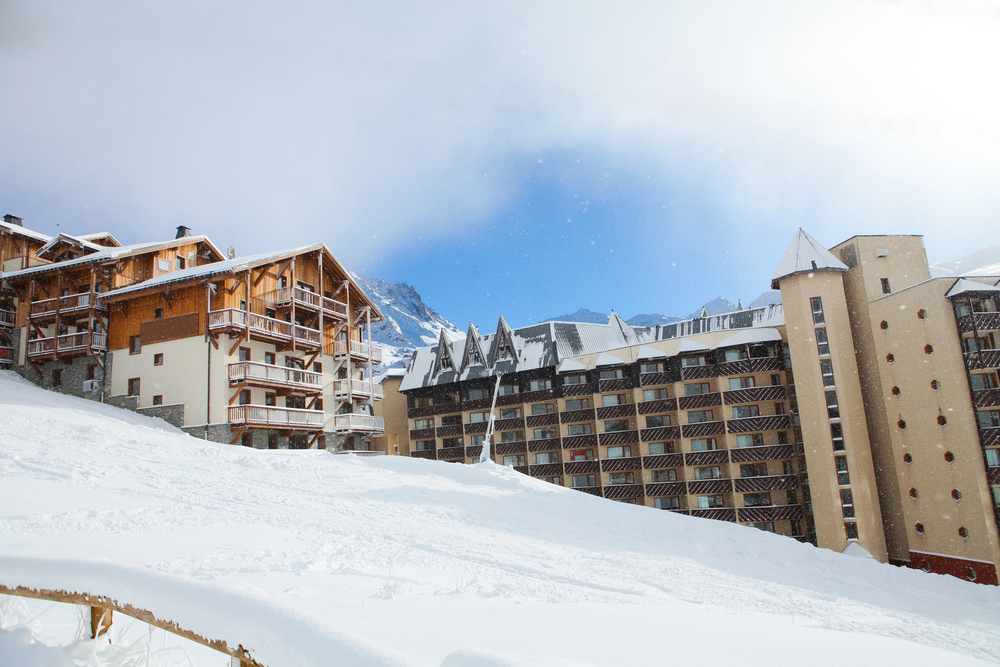
While its neighbors in the Trois Vallées ski area have expanded into international resorts, Saint-Martin has deliberately maintained its traditional Savoyard character. The village center feels authentically alpine, with narrow lanes connecting stone buildings where generations of mountain families have weathered harsh winters.
The parish church’s baroque interior reveals surprising opulence in this seemingly modest setting, while the excellent heritage museum documents the challenging mountain lifestyle before skiing transformed the regional economy. Despite access to the world’s largest ski domain, Saint-Martin maintains a peaceful atmosphere where local cheese producers and multigenerational residents continue mountain traditions alongside modern visitors seeking alpine authenticity.
Like Travel Pug’s content? Follow us on MSN.
Peisey-Nancroix

This collection of tiny hamlets scattered across a south-facing mountainside preserves alpine agricultural traditions while connecting to major ski infrastructure. Ancient farmhouses with weathered wooden facades and distinctive arched stone cellars stand as a testament to centuries of mountain adaptation, their massive timbers cut from forests that still surround the village.
An 18th-century baroque church with ornate gold interior decorations demonstrates how even remote mountain communities invested tremendous resources in religious buildings that served as community anchors through harsh alpine winters. The surrounding landscape features water-powered sawmills and grain mills that once sustained local self-sufficiency, now carefully preserved as monuments to mountain ingenuity.
Where Mountains Shape Culture
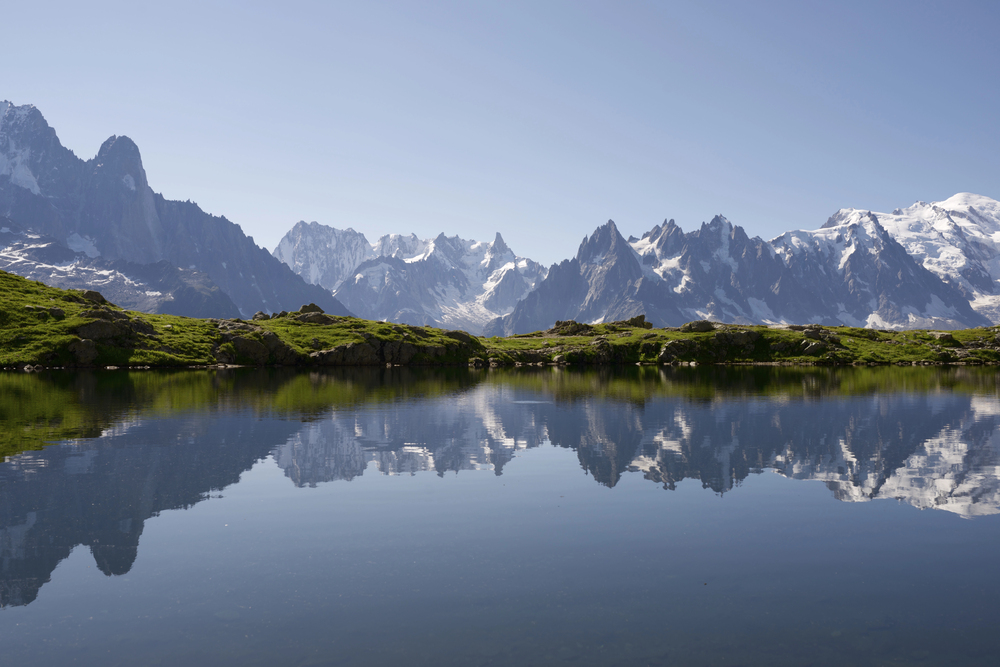
These French Alpine villages represent more than simply picturesque stops on a mountain journey—they embody centuries of human adaptation to some of Europe’s most challenging environments. Each settlement reveals how geographic isolation fostered distinct architectural solutions and cultural traditions that modern development has not entirely erased.
Whether seeking winter sports excitement, summer hiking adventures, or simply the chance to experience authentic mountain communities, visitors to these villages discover that the French Alps offer experiences far beyond dramatic scenery. The resilient spirit that allowed people to thrive in these high valleys continues today, creating living communities rather than mere museum pieces frozen in time.
More from Travel Pug

- Cities Growing so Fast You Won’t Recognize Them in 10 Years
- 13 Destinations Where Tourists Regularly Regret Their Trip
- 16 U.S. Cities That Are Quietly Becoming Travel Hotspots
- Where to Travel If You Love Long Bus Rides and Daydreams
- 20 Cities Perfect for Solo Travelers Who Crave Adventure & Culture
Like Travel Pug’s content? Follow us on MSN.
